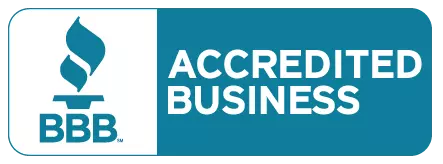How to Maximize Your Budget and ROI
Learn the difference between manual and automated bidding, when to use each strategy, and how to choose the right one for your Google Ads goals.
Introduction — Why Bidding Strategies Matter
Your Google Ads bidding strategy directly determines how efficiently you spend money and how much return you get from every click.
A great ad with the wrong bidding model can drain your budget fast, while the right one can double your conversions without increasing cost.
At The Commerce Gear, we manage campaigns across Egypt, GCC, and international markets, continuously testing and optimizing bidding models to hit the perfect balance between reach, conversion, and profitability.
What Is a Bidding Strategy in Google Ads?
A bidding strategy tells Google how you want to pay for users to interact with your ads — whether that’s clicks, impressions, or conversions.
Your bidding method should match your campaign goal:
-
Website traffic → CPC-based bidding
-
Sales or leads → conversion-based bidding
-
Brand visibility → impression-based bidding
Understanding these differences ensures you spend efficiently and scale sustainably.
The Two Main Categories of Bidding Strategies
1. Manual Bidding (Manual CPC)
You set your own maximum cost-per-click (CPC) for each keyword or ad group.
This gives you full control but requires close monitoring and constant optimization.
Best For:
-
Small campaigns with limited budgets
-
Testing phases or pilot projects
-
Experienced advertisers wanting precision control
Pros:
-
Full transparency over cost per click.
-
Prioritize high-value keywords manually.
-
Ideal for testing new markets or products.
Cons:
-
Time-consuming and data-heavy.
-
Can lead to underbidding or overspending if not monitored.
-
Doesn’t leverage Google’s machine learning for optimization.
2. Automated Bidding (Smart Bidding)
Automated or “smart” bidding uses Google’s AI to adjust your bids in real time — based on the likelihood of a conversion.
Google Smart Bidding strategies include:
-
Maximize Clicks
-
Maximize Conversions
-
Target CPA (Cost Per Acquisition)
-
Target ROAS (Return on Ad Spend)
-
Maximize Conversion Value
-
Target Impression Share
Let’s go deeper into each.
Types of Automated Bidding Strategies
1. Maximize Clicks
Goal: Get as many clicks as possible within your daily budget.
Use Case: Great for brand awareness or driving initial traffic to a new website.
Tip: Set a maximum CPC limit to prevent overspending on low-quality clicks.
2. Maximize Conversions
Goal: Get the highest possible number of conversions (sales, leads, form submissions).
Use Case: Works best once your account already has conversion tracking set up.
Tip: Ensure accurate conversion tracking via GA4 or Tag Manager before activating this strategy.
3. Target CPA (Cost Per Acquisition)
Goal: Automatically set bids to get as many conversions as possible at or below your target CPA.
Use Case: Ideal for lead generation campaigns or when you know your acquisition cost threshold.
Tip: Start with a realistic CPA target based on your past campaign data.
4. Target ROAS (Return on Ad Spend)
Goal: Automatically optimize bids to achieve your desired ROAS.
Use Case: Perfect for eCommerce campaigns that track revenue values.
Tip: Ensure each conversion has a value assigned; otherwise, Google can’t optimize effectively.
5. Maximize Conversion Value
Goal: Focus on getting the highest total conversion value rather than quantity.
Use Case: Ideal when each conversion has a different value (e.g., various product price points).
Tip: Use this when you care about profit margin, not just volume.
6. Target Impression Share
Goal: Maximize ad visibility by appearing in a specific position (top or absolute top).
Use Case: Great for brand dominance or when defending brand keywords.
Tip: Combine this with a limited budget to avoid overspending on impressions that don’t convert.
Choosing the Right Bidding Strategy
| Objective | Recommended Strategy | Campaign Type |
|---|---|---|
| Drive traffic | Maximize Clicks / Manual CPC | Search, Display |
| Generate leads | Target CPA / Maximize Conversions | Search |
| Increase sales (eCommerce) | Target ROAS / Maximize Conversion Value | Shopping, Performance Max |
| Build brand awareness | Target Impression Share / Maximize Clicks | Display, Video |
| Test new market | Manual CPC / Maximize Clicks | Search |
Pro Tip: Combine automated bidding with smart segmentation — break campaigns by category, margin, or geography to give Google cleaner learning signals.
Advanced Tips from The Commerce Gear
-
Start with Maximize Conversions, then switch to Target CPA or ROAS after gathering enough data (30+ conversions).
-
Don’t mix different bidding goals in the same campaign — each needs its own structure.
-
Use portfolio strategies to share learning between similar campaigns.
-
Monitor conversion lag — allow time for algorithm learning before making changes.
-
Test seasonally — for example, use aggressive CPA bidding during high-demand events like Black Friday.
Common Bidding Mistakes to Avoid
-
Changing bidding strategies too frequently.
-
Using automation without enough conversion data.
-
Setting unrealistic CPA or ROAS goals.
-
Ignoring device and location performance.
-
Not excluding low-value conversions.
Remember: Google’s AI is powerful, but it needs accurate, stable data to optimize effectively.
FAQs — Google Ads Bidding Strategies
Q1: What is the best bidding strategy for beginners?
A: Start with Maximize Clicks or Manual CPC to understand traffic flow, then move to Maximize Conversions or Target CPA as data grows.
Q2: How many conversions do I need before using Smart Bidding?
A: Ideally 30–50 conversions in the past 30 days for Google to learn effectively.
Q3: Can I combine manual and automated bidding?
A: You can’t mix both in the same campaign, but you can run separate campaigns with different strategies.
Q4: Does Smart Bidding work for small budgets?
A: Yes, but you’ll need enough conversion data. For new accounts, start manually, then switch once consistent conversions are achieved.
Q5: What’s better for eCommerce — Target CPA or Target ROAS?
A: Target ROAS is more precise since it focuses on profitability, not just conversion count.
Conclusion — Smarter Bidding, Better ROI
Your bidding strategy is the heart of your Google Ads performance.
Choosing the right one means aligning campaign goals, budget, and data maturity.
As your campaigns evolve, your bidding strategy should too — moving from manual control to AI-powered optimization.
At The Commerce Gear, we help brands optimize every click, every bid, and every conversion — delivering consistent growth through smart, data-driven Google Ads management.
Get a Free Google Ads Audit
📩 Let’s Optimize Your Ad Spend Together
Our team will audit your current bidding strategy, identify wasted spend, and set a plan to boost ROAS and conversions.
👉 Contact The Commerce Gear




